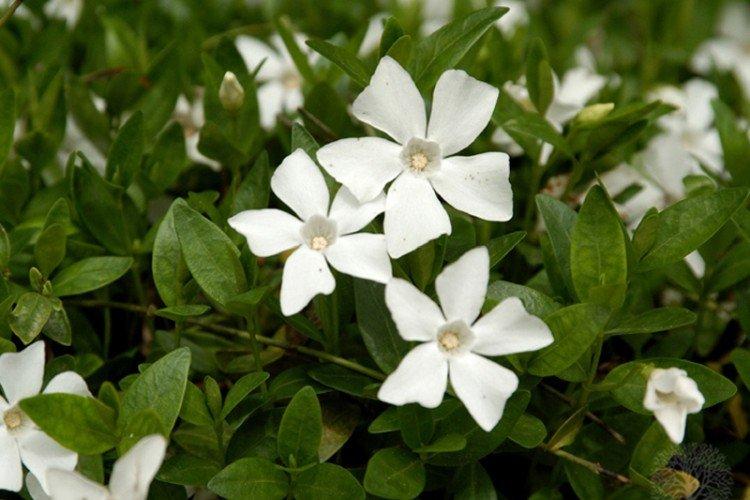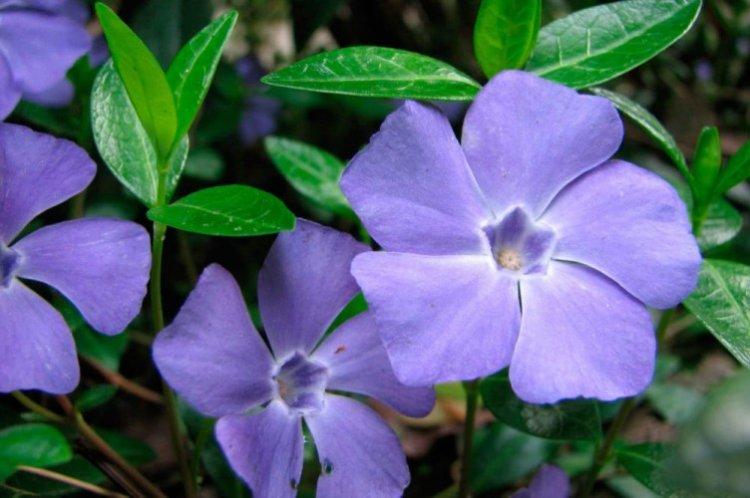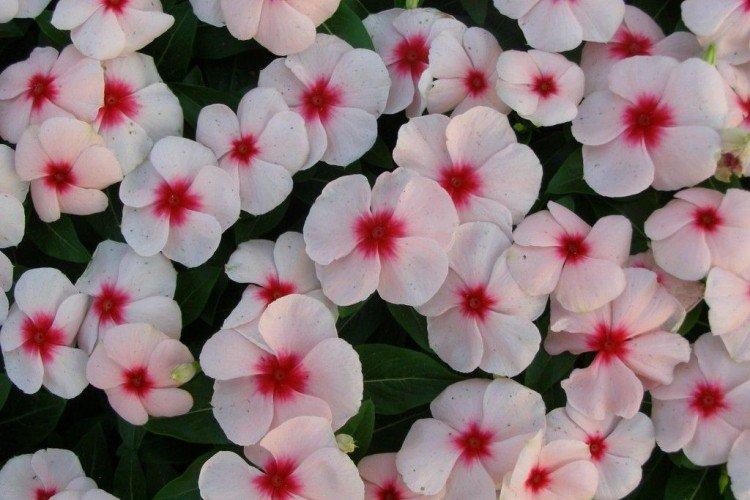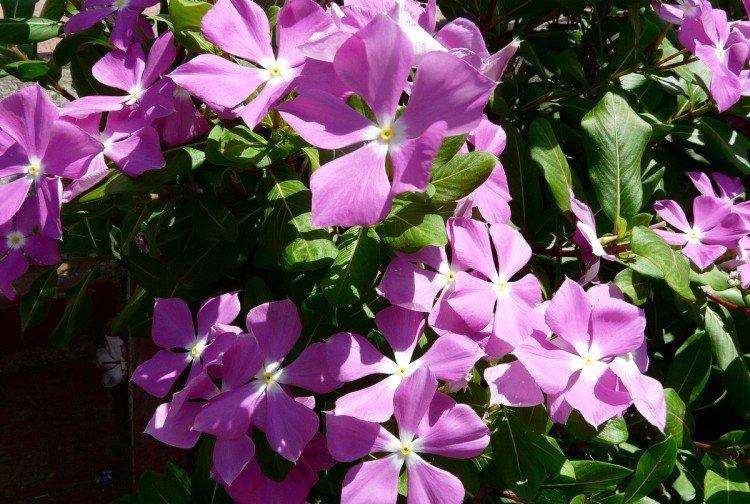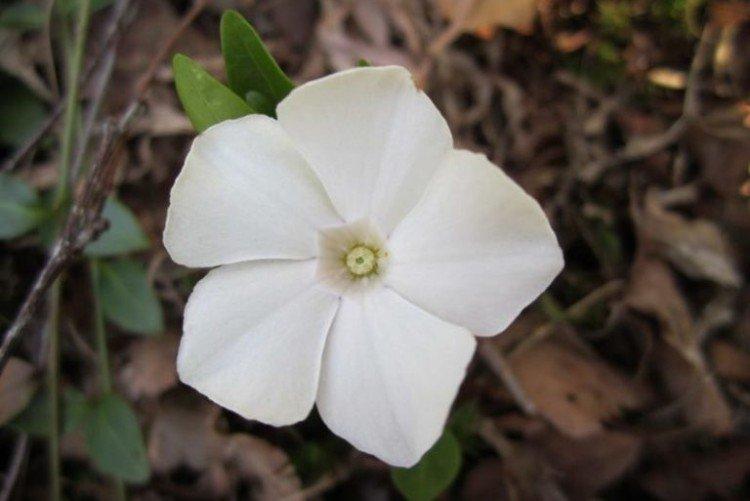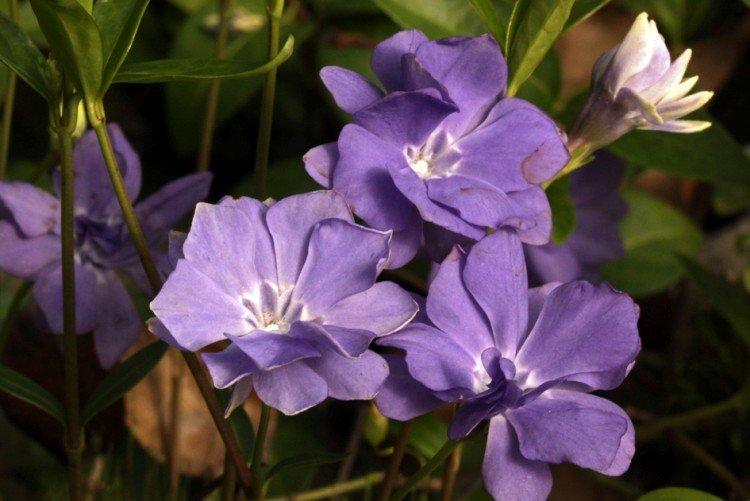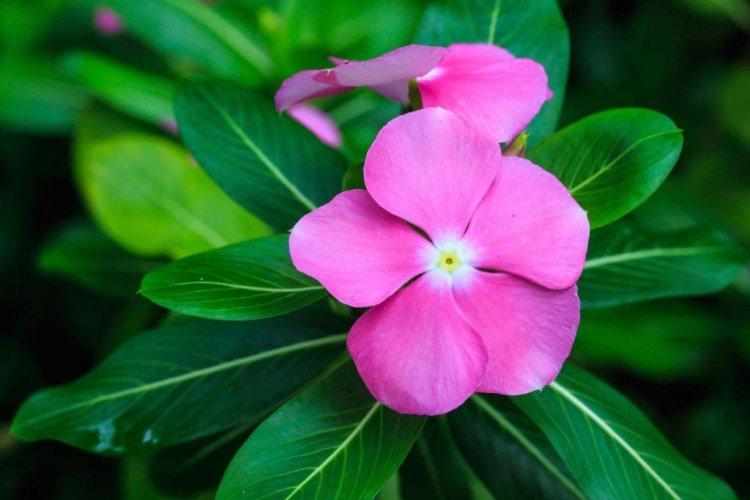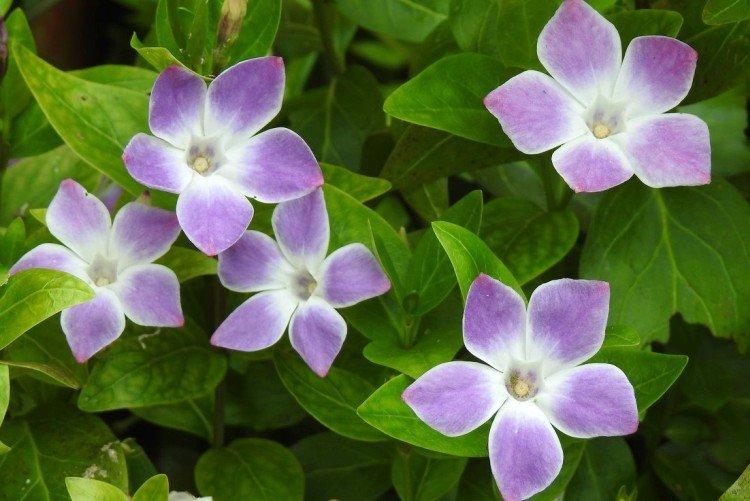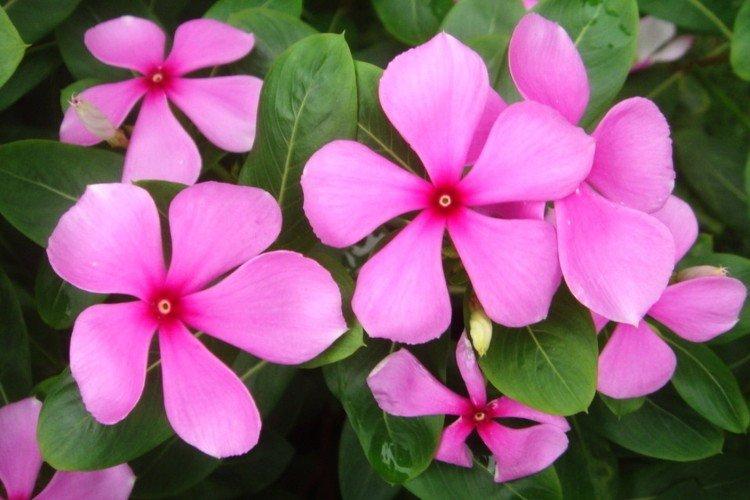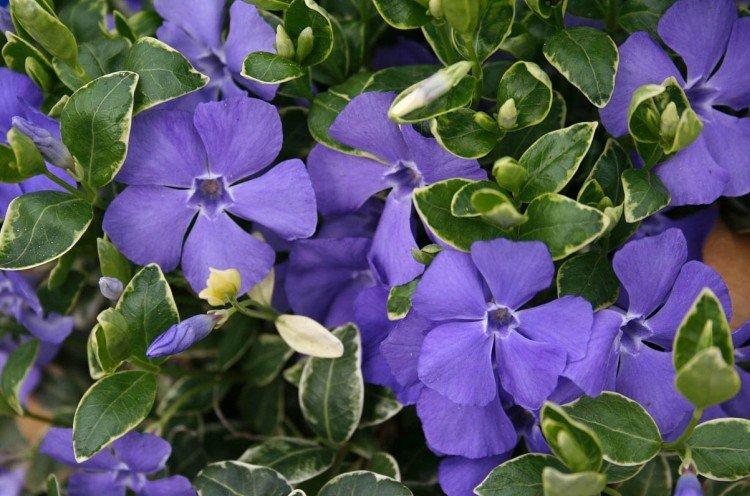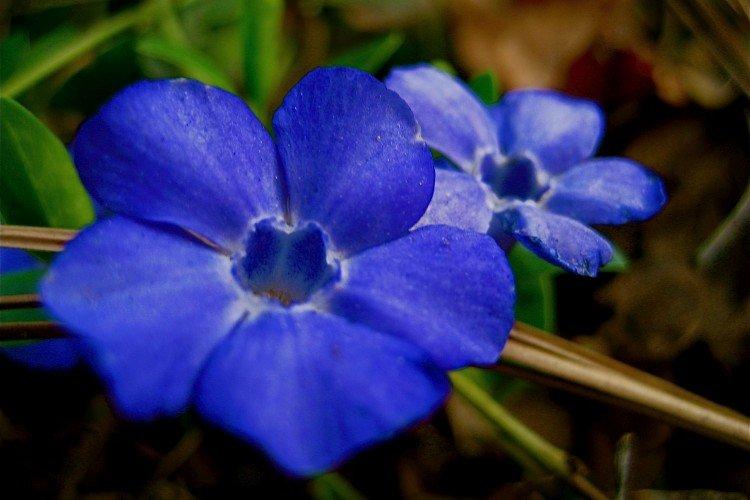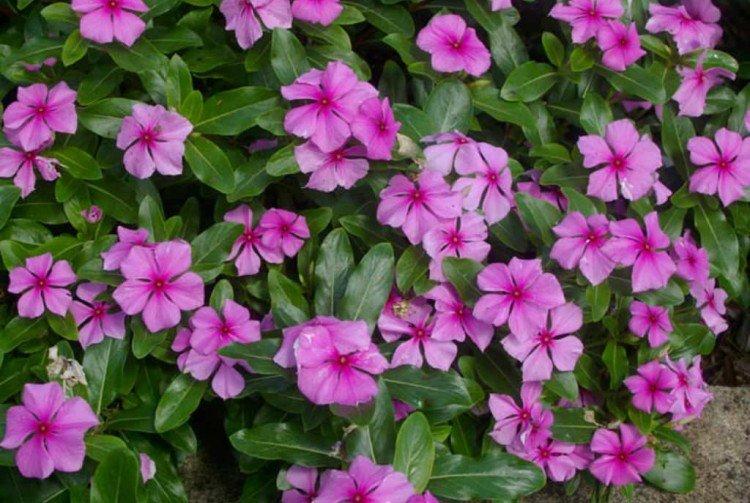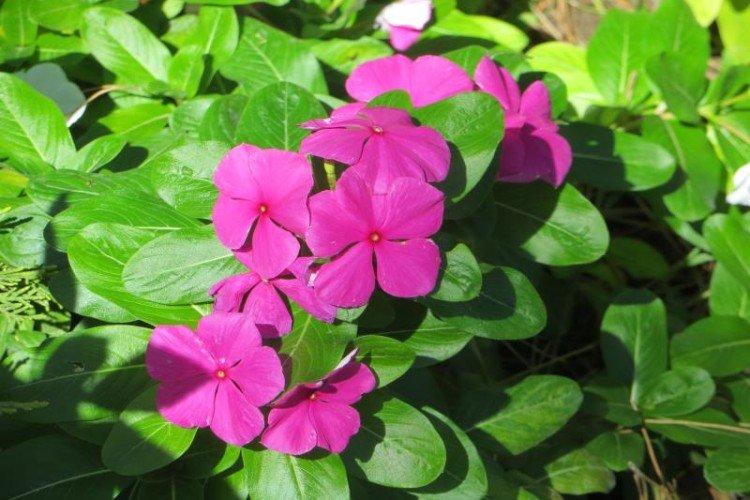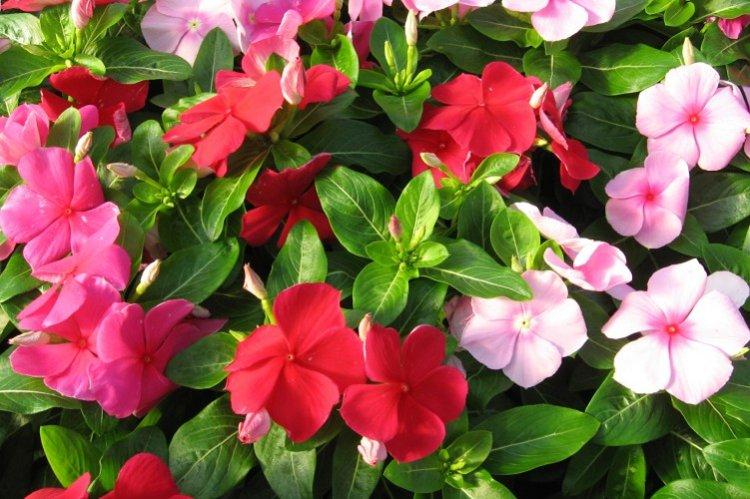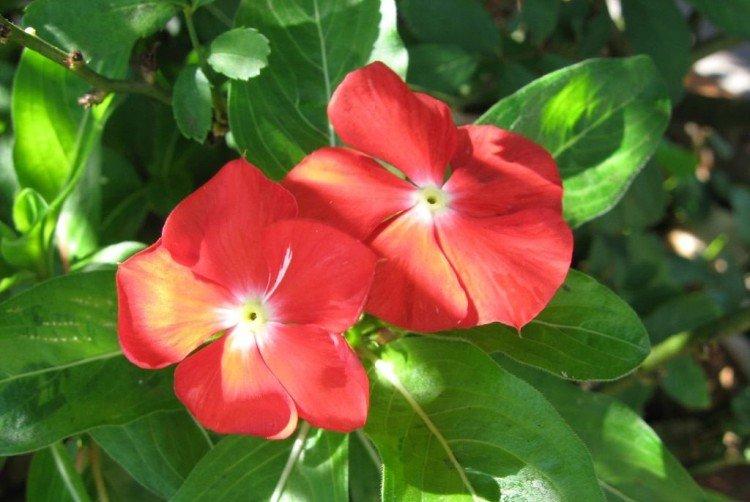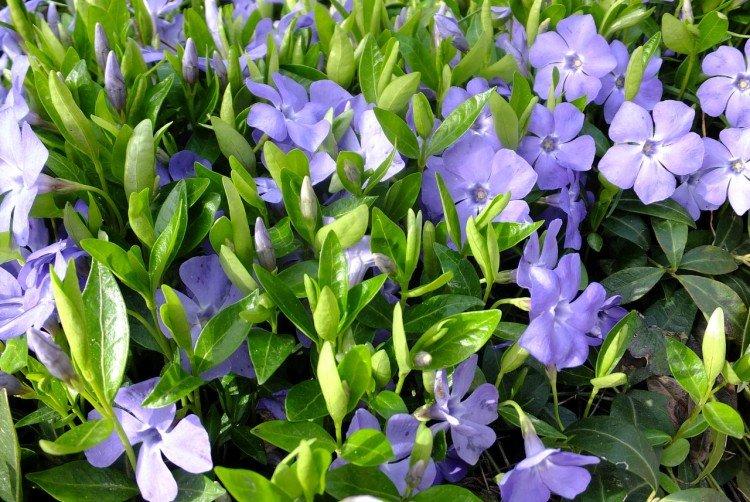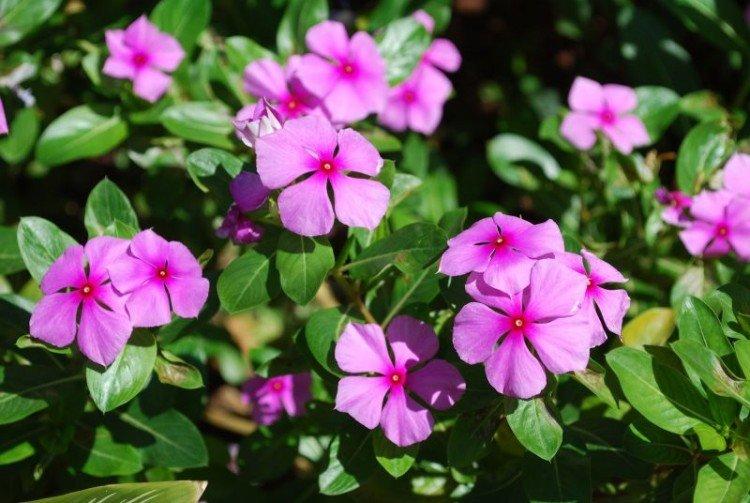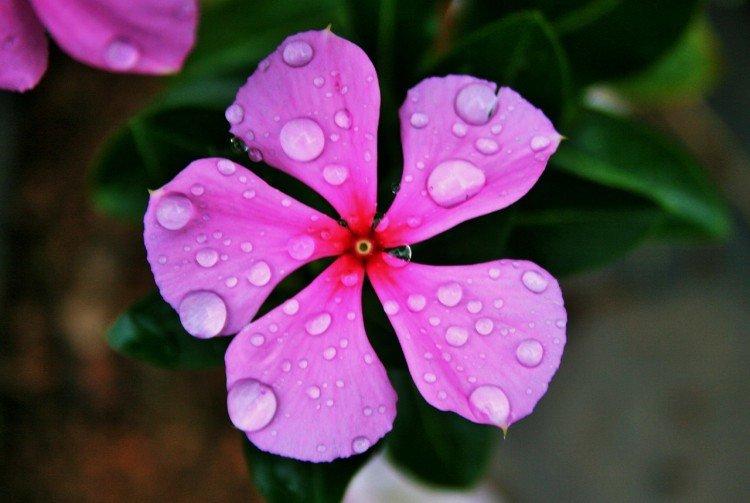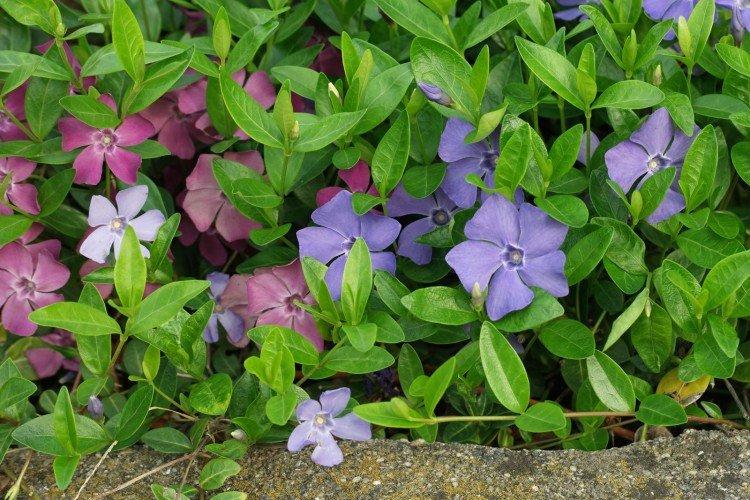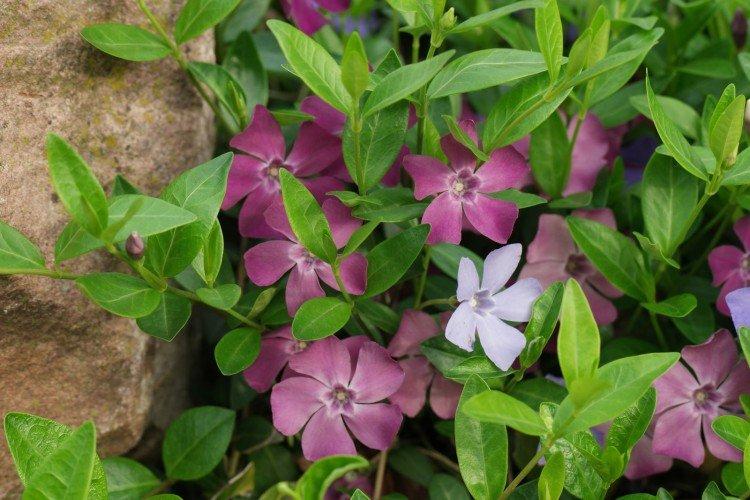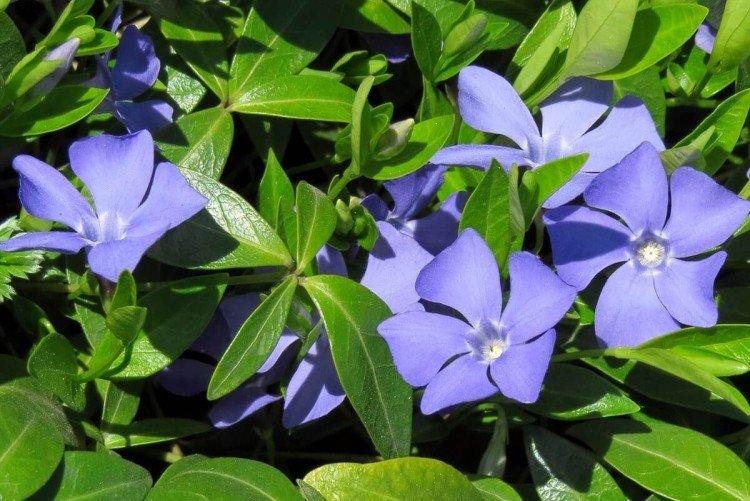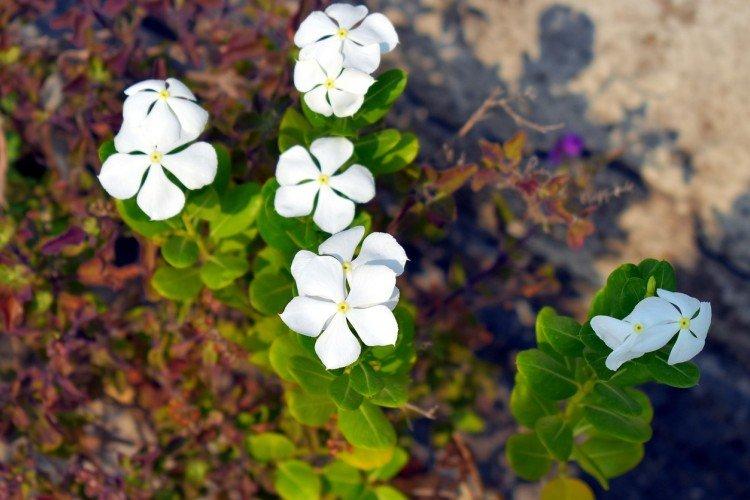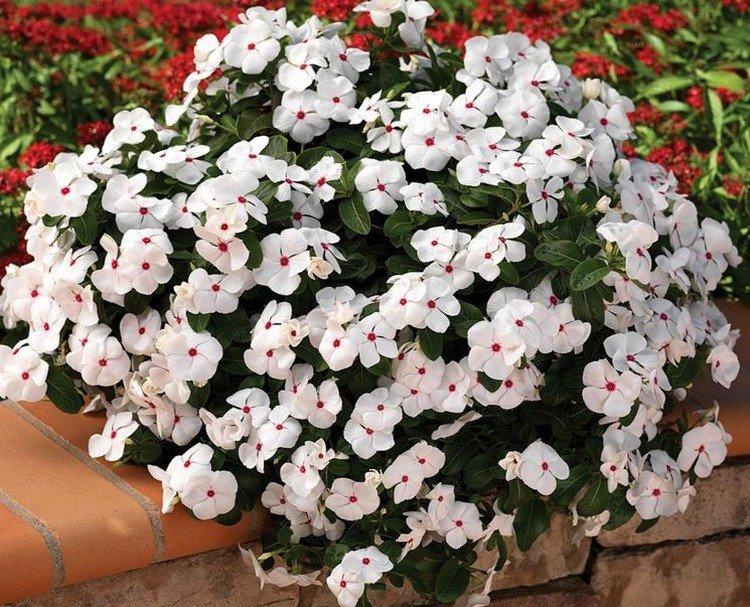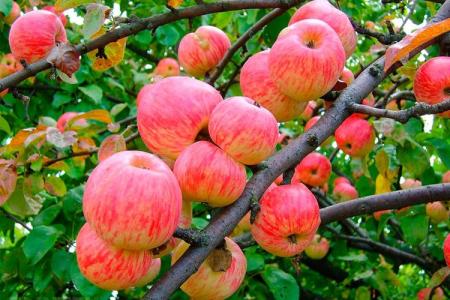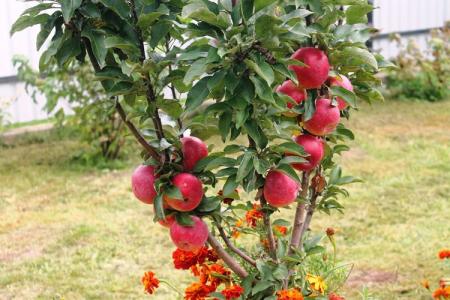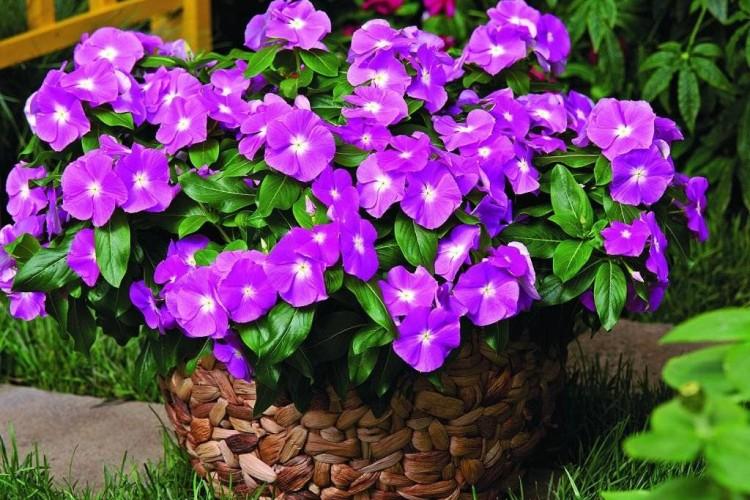
Delicate and graceful periwinkle is the most ideal plant when you want a beautiful blooming carpet, but conditions do not allow. Some of its species feel wonderful even in the shade of a dense forest. And their small roots are able to get moisture from the most overdried soil. Let's tell you more!
general information
Periwinkle refers to ground cover plants and can be creeping or climbing. It has shiny leathery leaves, from the axils of which simple but very delicate flowers of five petals emerge.
The periwinkle has thin, but numerous shoots that spread in all directions. They take root on their own, because each node can put down its own roots. Periwinkle blooms in spring, but individual flowers can be seen until autumn. And then there are evergreen varieties that are not afraid of either snow or heat.
Periwinkles are grown in any way: in flower beds, instead of decorative dividers, and even instead of a mulch layer around trees. They are ideal for alpine slides, but will even grow in hanging planters. It's also a surefire way to get rid of other more dangerous weeds in your garden.
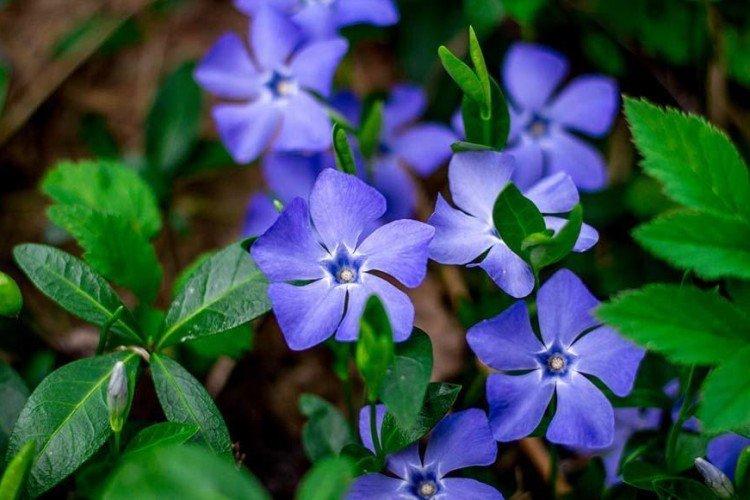
Types and varieties of periwinkle
In gardening, only small and large periwinkles are mainly bred, or rather, several of their specific varieties. But in general there are a little more of them, and they differ in size and shade.
Large periwinkle
Large, as for periwinkle, flowers bloom up to 5 cm and are most often colored blue and blue, although other varieties are also found. This type is the most popular among summer residents. Pay attention to the periwinkle Alba, Maculata and Variegat.
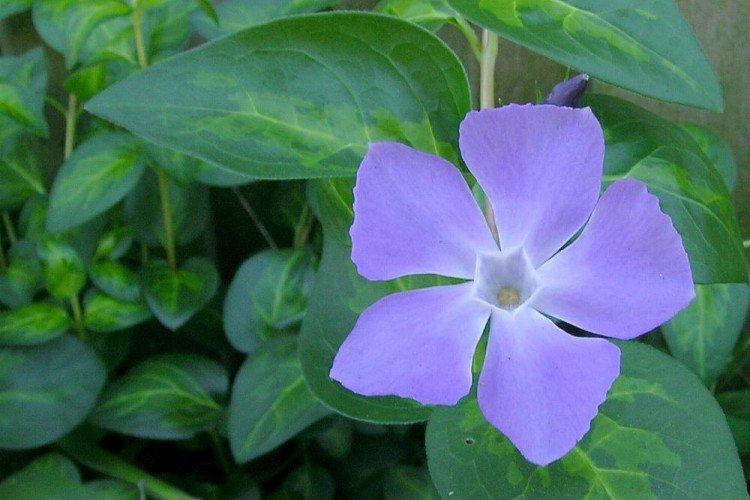
Lesser periwinkle
In our latitudes, it is especially common in the South, and in Europe it is loved by gardeners in the Mediterranean regions. Among the small periwinkles, there are varieties that are resistant to different weather conditions, multi-colored series and very tiny flowers up to 2 cm.
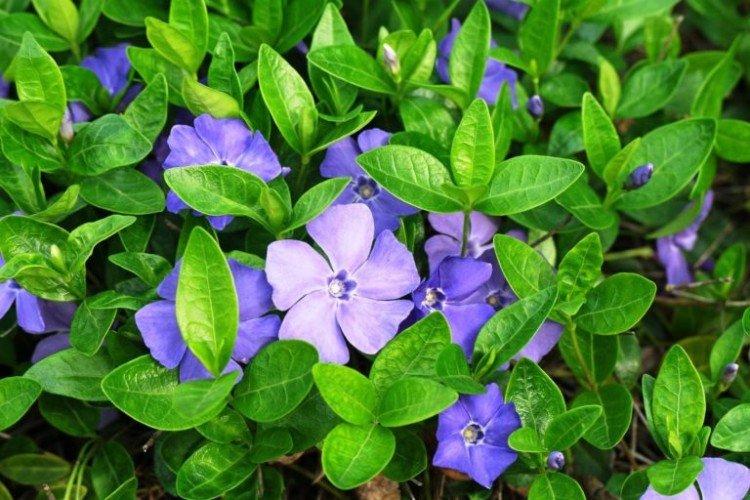
White periwinkle
This is a group of garden varieties that differ slightly from wild ones in the structure of the flower. In addition to purely white subspecies, there are beautiful blue-white, white-lilac and white-purple.
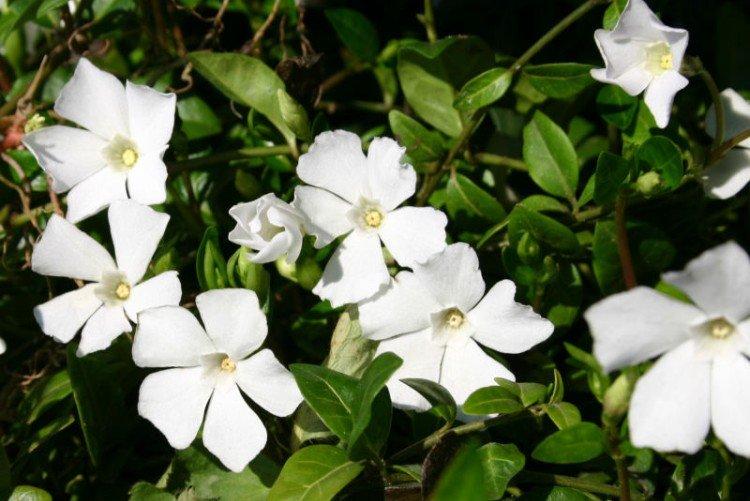
Pink periwinkle
Unusual pink varieties are not at all like their relatives, and inexperienced gardeners do not even recognize periwinkle in them. The flowers grow in small shrubs covered with small pink flowers.
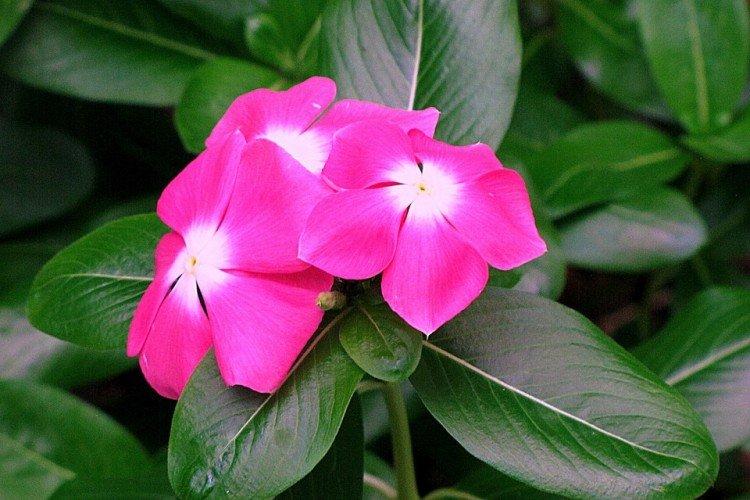
Terry periwinkle
This group of varieties is also called pubescent and they are found only in the North Caucasus. By the way, the most popular subspecies of Flore Pleno is terry. It is his photo that you most often see in magazines, illustrations and postcards.
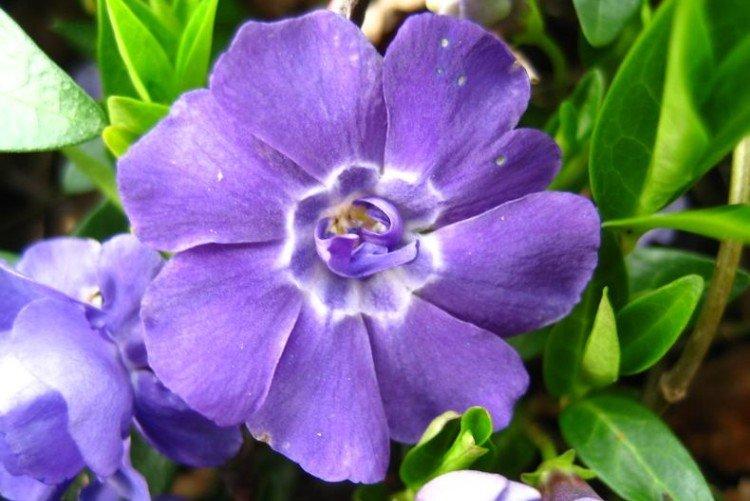
Variegated periwinkle
A very decorative flower grows either as a creeping carpet, or as a group of small bushes - it is difficult to determine at once. Thanks to its beautiful variegated leaves, it is often used to decorate flower beds.
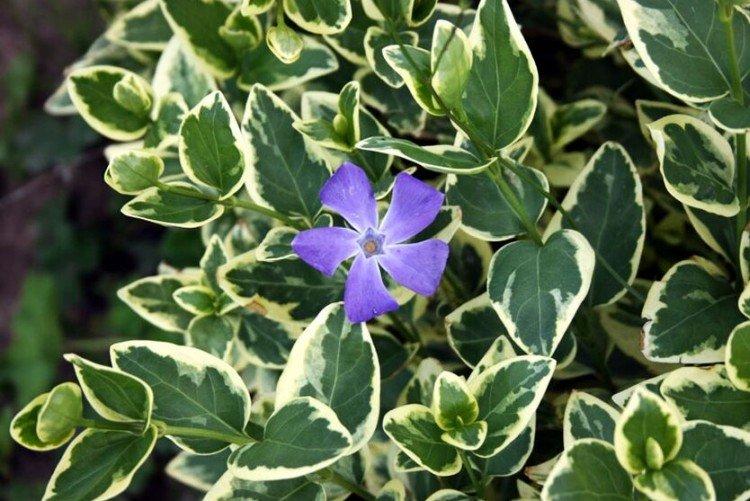
Herbaceous periwinkle
The wild-growing variety is used in medicine and cosmetology. It is a perennial that thrives in open areas with bright blue or purple flowers.
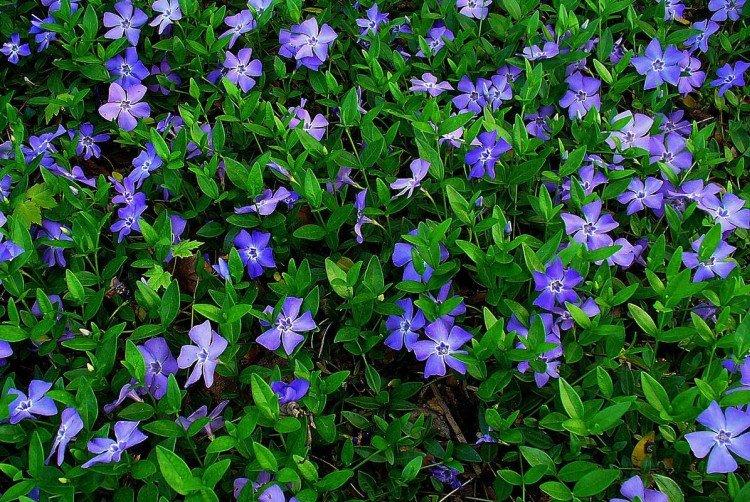
Caring for periwinkle
Periwinkle is so unpretentious that, without proper attention, it can capture the entire garden along with weeds. But this is rather a plus, because he does not need complicated care - it is enough to control his growth!
Temperature and lighting
Most periwinkles prefer sunny areas and grow in open clearings. But there are varieties that grow well in the shade - you just need to pay attention to the characteristics. The small periwinkle is not afraid of cold weather, but the large periwinkle reacts worse to frost and drafts.
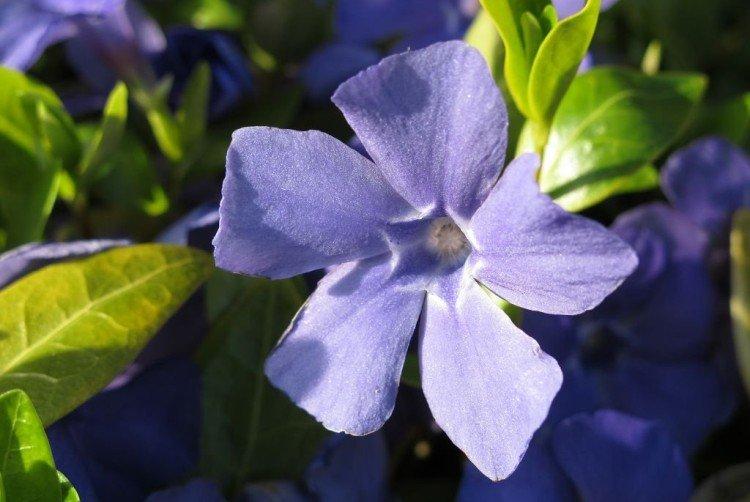
Watering
Periwinkle does not need to be watered often, even on the hottest days. At the height of summer, an interval of a week and a half is suitable, and in the cool season it can be safely doubled.
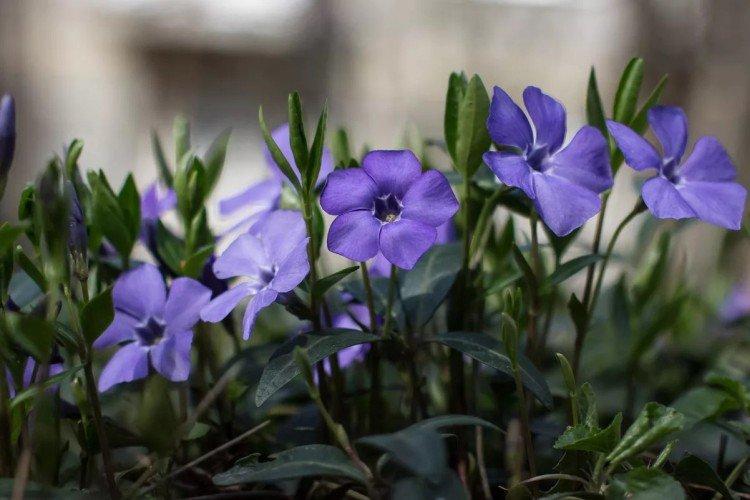
The soil
The soil is almost the only moment that is really important to consider when planting a periwinkle. The soil should be neutral or slightly acidic.Too poor, heavy or clayey soil without baking powder is not suitable.
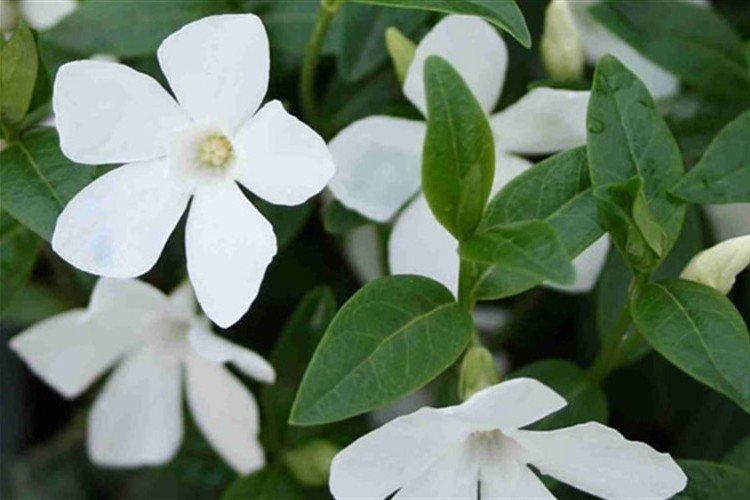
Fertilizers and feeding
Like other plants that grow literally before our eyes, the periwinkle is sensitive to feeding. Nitrogen is especially needed to form a beautiful green carpet. We recommend alternating organic matter with mineral supplements once or twice a month.
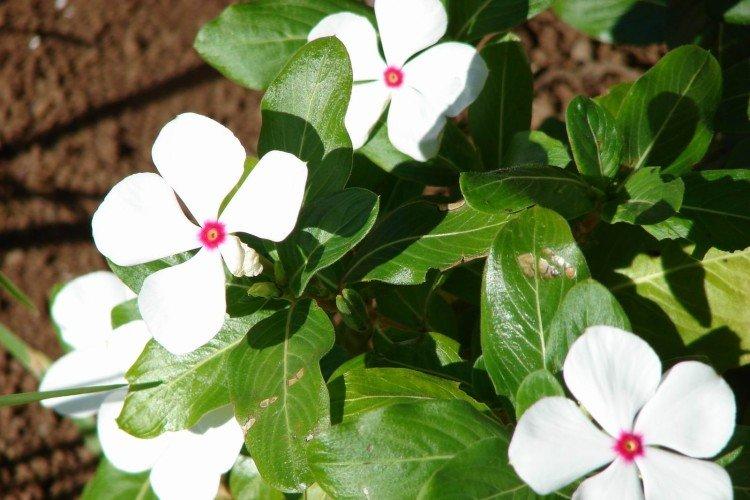
Transplant and reproduction
Periwinkle is propagated by cuttings, and occasionally individual varieties by division. If the carpet already exists and needs to be expanded, horizontal layers are used. In fact, you just need to sprinkle the already lying shoots with earth so that they take root themselves.
Cuttings are planted at a distance of about 25 cm from each other - they will grow quickly. We recommend sticking to a checkerboard pattern - this is better for both the ground and the future carpet. The ideal planting time is the beginning of autumn, so that by winter the cuttings are thoroughly rooted and gain strength by spring.
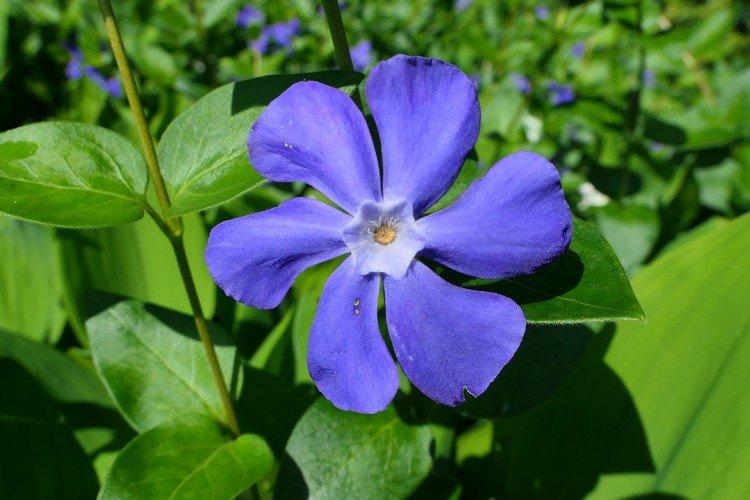
Pinching and thinning
In order for a periwinkle carpet to remain beautiful, neat and tidy, it must be thinned periodically. Flowers grow much worse if they constantly interfere with each other. And so that the bushes grow faster, pinching is carried out.
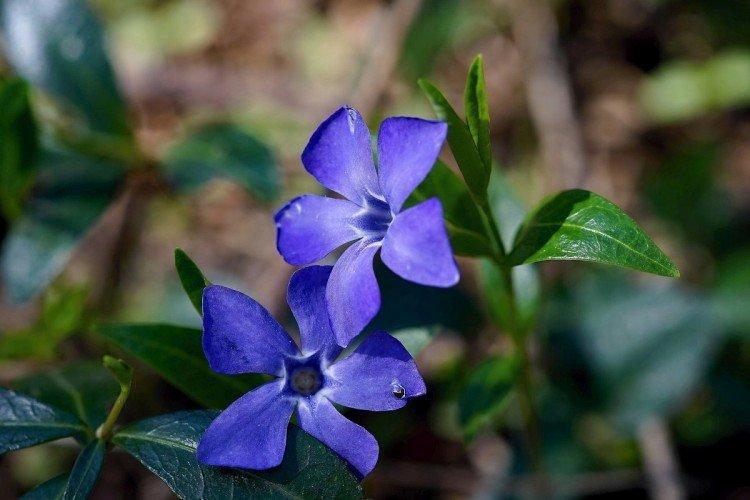
Wintering
Of all the varieties of periwinkle, only small winters easily tolerate our winters. But it is better to insulate large ones with leaves, straw or any other materials. Young plants are necessarily covered, regardless of the species.
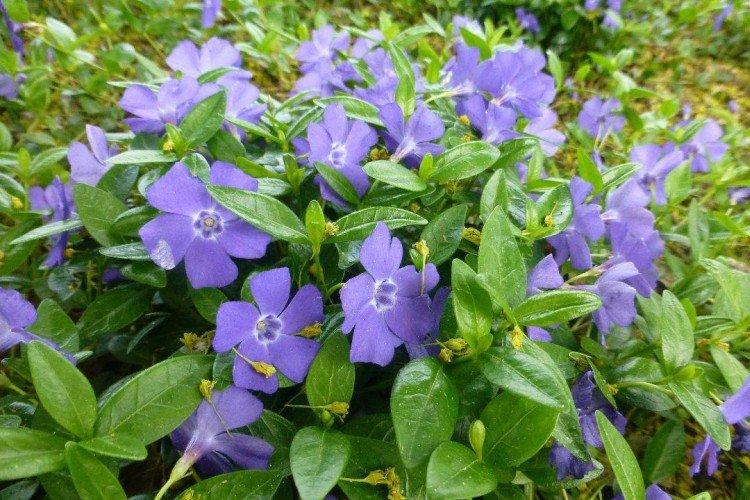
Pest and disease control
Periwinkle is so unassuming that it almost never gets sick. Very rarely, it is affected by two fungal diseases - powdery mildew or rust. They can be easily identified by their white bloom and red spots, respectively. For treatment and prevention, complex fungicides and timely thinning are needed.
There are almost no problems with insects and pests, because periwinkle is poisonous for them. The only parasite that can live in such a flower carpet is scale insects. They have a strong shell, so we recommend using professional insecticides right away.
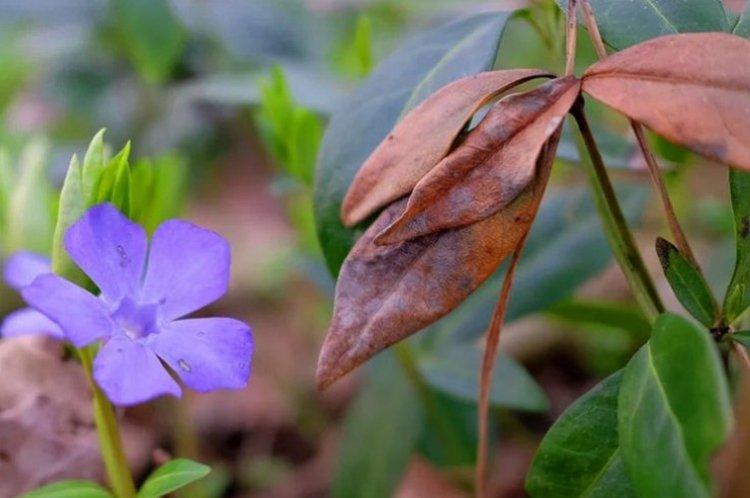
Periwinkle - photo
To inexperienced gardeners, periwinkles may seem simple and unremarkable. But this is far from reality, because it is not just that spectacular flowering carpets are adored all over the world. Take a look!

